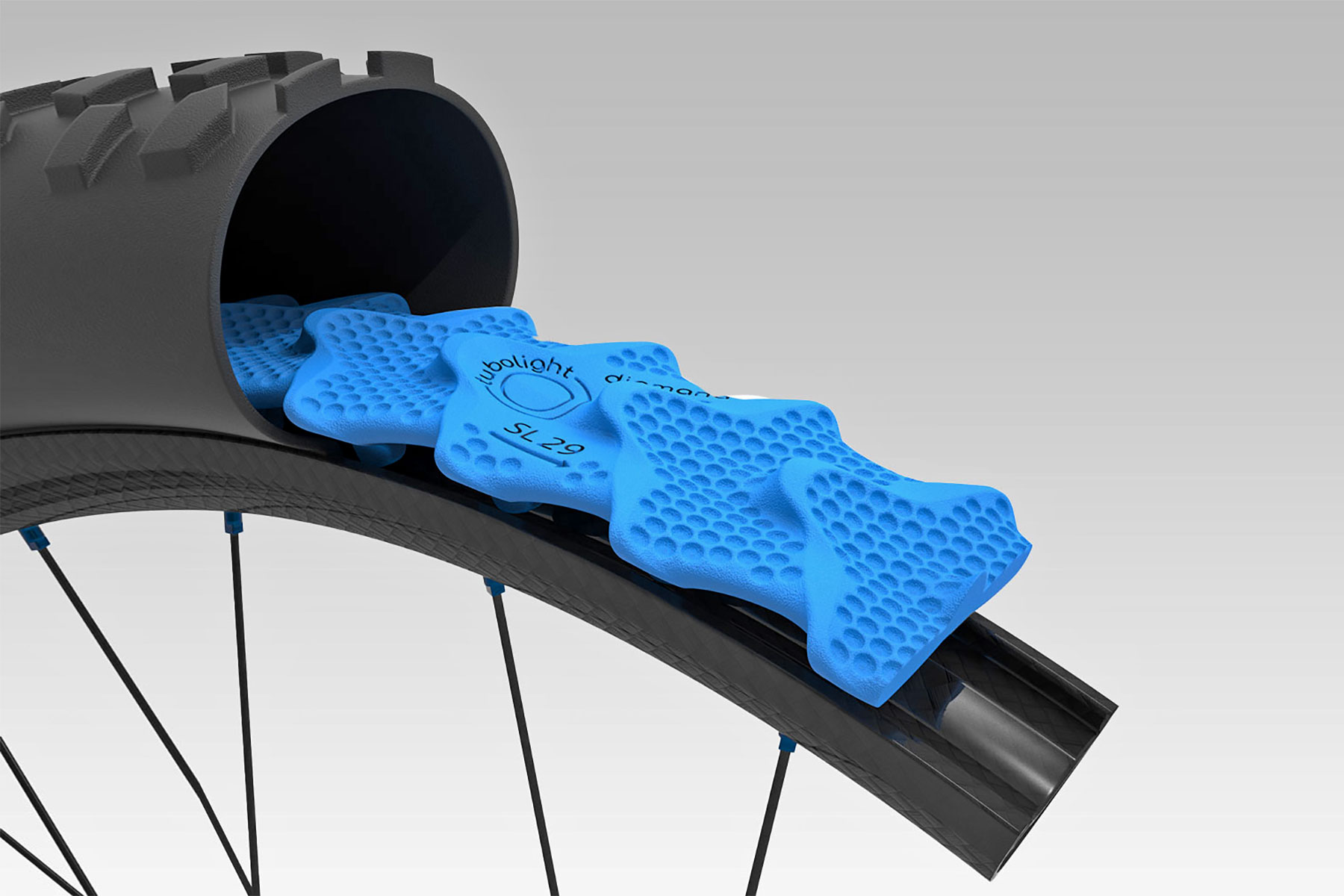Tubolight says their Diamana is not only the fastest & lightest mountain bike tire liner on the market – but they also claim it is “the winningest tire insert [on the] World Cup, and the only one winning in both downhill and cross-country“. Its secret though is NOT just its light weight or some unique material. Tubolight says that it is the special shaping of their Diamana liner that manipulates the flow of air molecules INSIDE your tire to better control local tire compression & rebound as you roll over rough terrain.
Tubolight Diamana is the fastest, most advanced MTB tire liner

I’m always a bit skeptical of a product we’ve not heard much of, claiming to be the fastest and winningest. But besides sealant itself, tire liners are the least outwardly visible component on a race bike. (To be fair we did hear about, but not physically see them on Thibaut Daprela’s Commencal Supreme DH V5 downhill race bike last summer in Leogang.)
So we’ll just take Tubolight’s word for it on the wins if only based on the rainbow jersey photos of 2021 XC World Champ Evie Richards, 2021 Olympic Gold medalist Jolanda Neff, and 2021 DH World Champ Myriam Nicole on their homepage. Not to mention 2021 XC World Cup #1 Mathias Flückiger and 2022 DH World Cup #1 Amaury Pierron. Those 5 riders alone have apparently racked up a slew of wins on Tubolight tire liners as well as several other riders on 5 solid MTB teams. There’s also the curious sponsorship of pro conti road team Q36.5, since Tubolight’s top Diamana tech isn’t yet available in road tire sizes.
So, we all know about MTB tire liners. What makes a Tubolight Diamana liner different?
What happens inside a mountain bike tire when you hit an obstacle?
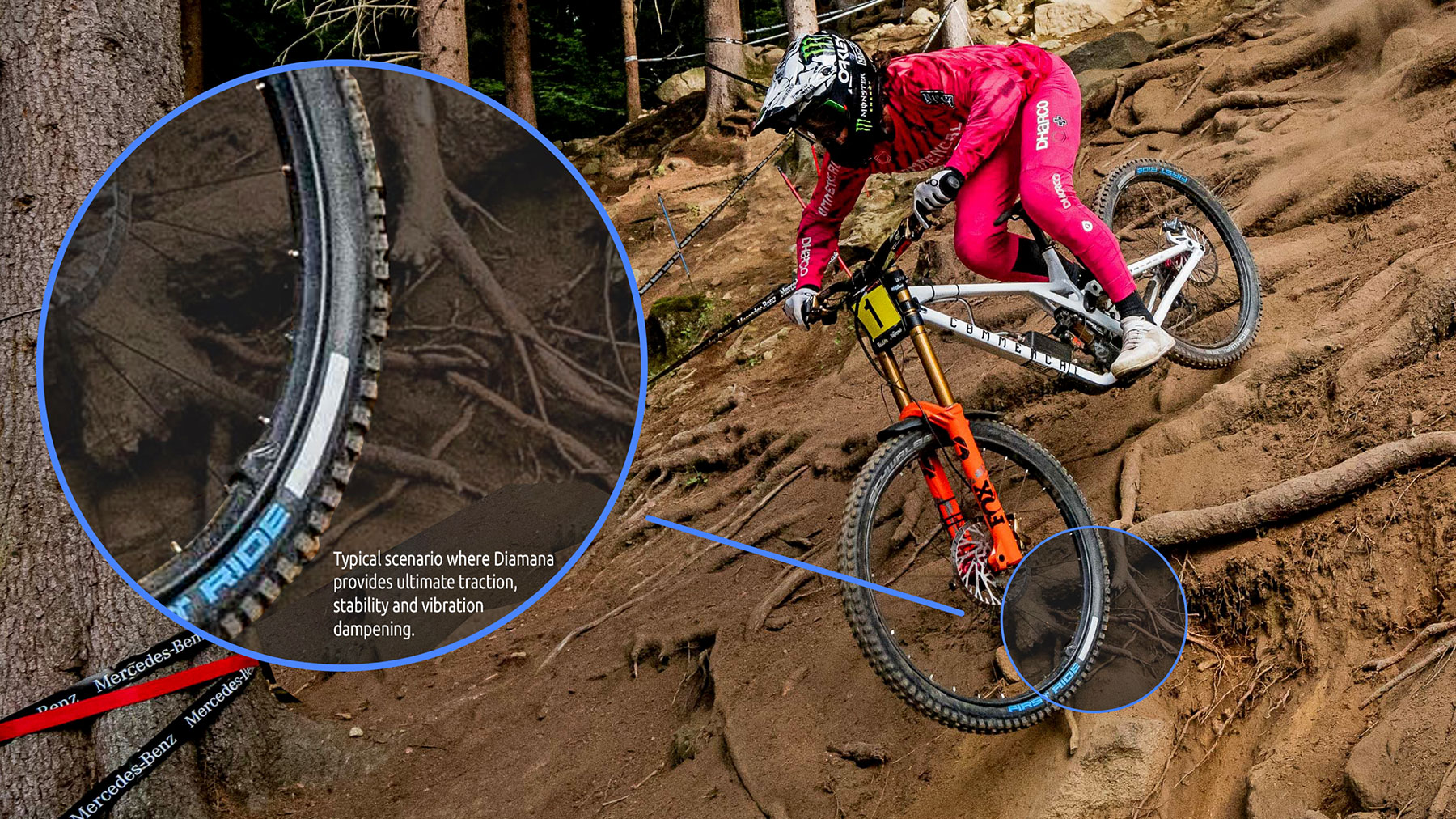
Many mountain bikers are on board with the idea that tire liners can make you faster in the long run. You get improved low-pressure grip & lower rolling-resistance without losing time trailside fixing flats. But Italian tire liner maker Tubolight has a more nuanced take on how tire liners can make you faster…
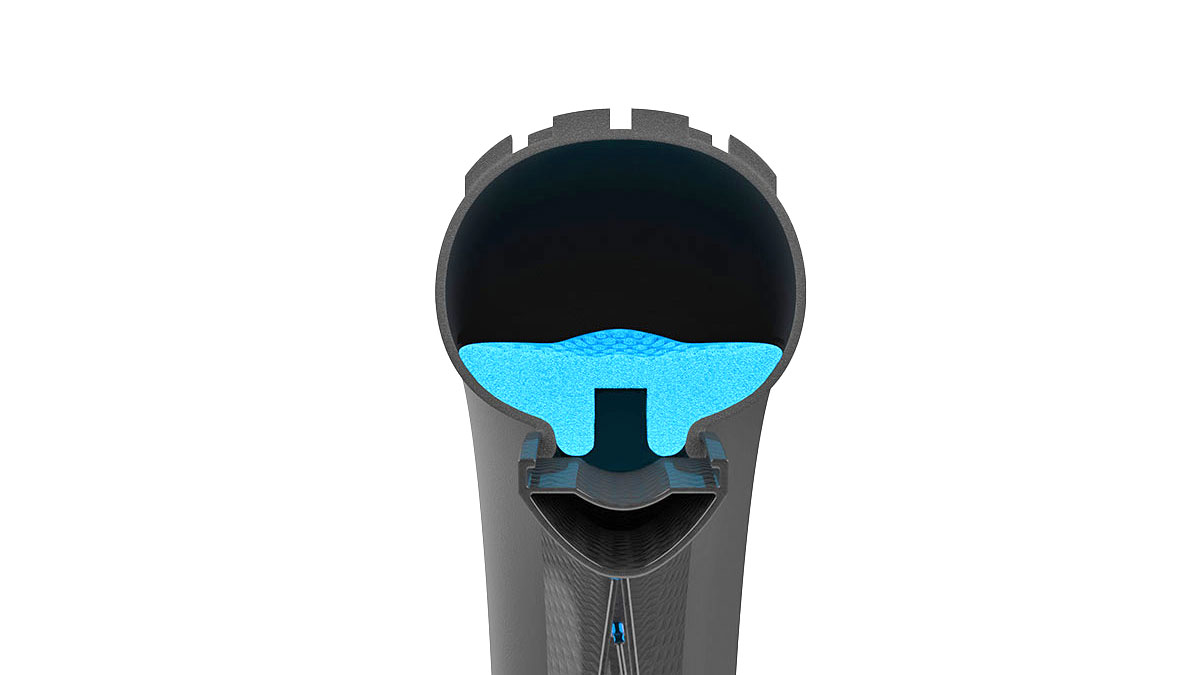
When your mountain bike tire hits an obstacle, the tire deforms at the site of impact. That locally increases the air pressure in the tire, which in turn quickly rebounds, bouncing the tire back out toward the point of impact. This can often happen quicker than the bike’s suspension can even start to react.
Lower tire pressures and supple tire casings can delay that fast rebound. But there’s only so low or supple you can go without sacrificing stability, control, or durability – even with most conventional tire liners, which are already a big improvement.
How does the Diamana solution work? And why?
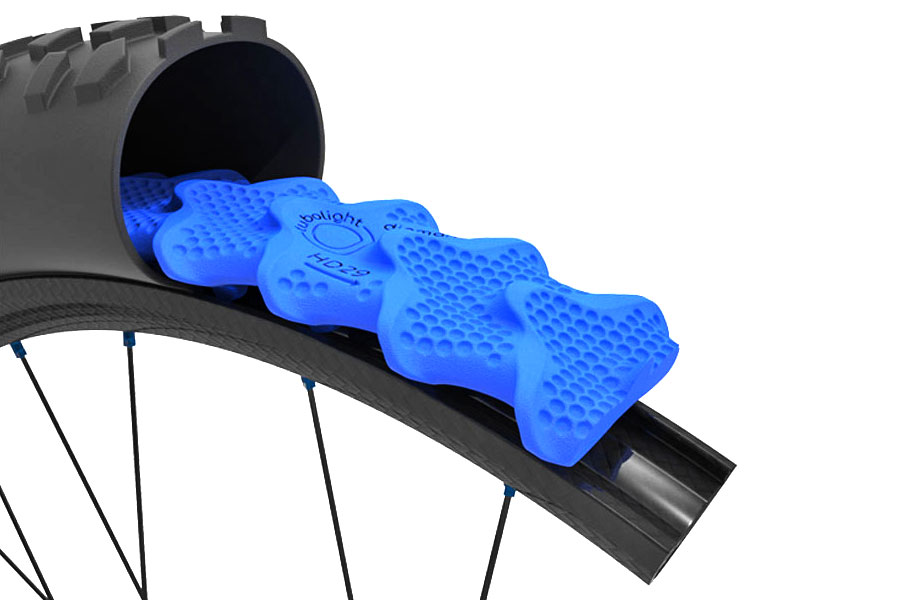
The Tubolight Diamana aims to essentially create 2 layers of air pressure inside the tire volume and to control the speed at which air flows from one to the other. This creates a dual benefit of slowing local tire rebound with lower outer pressure near the site of impact and spreading the force further around the rim for better impact protection with a higher pressure zone next to the rim.
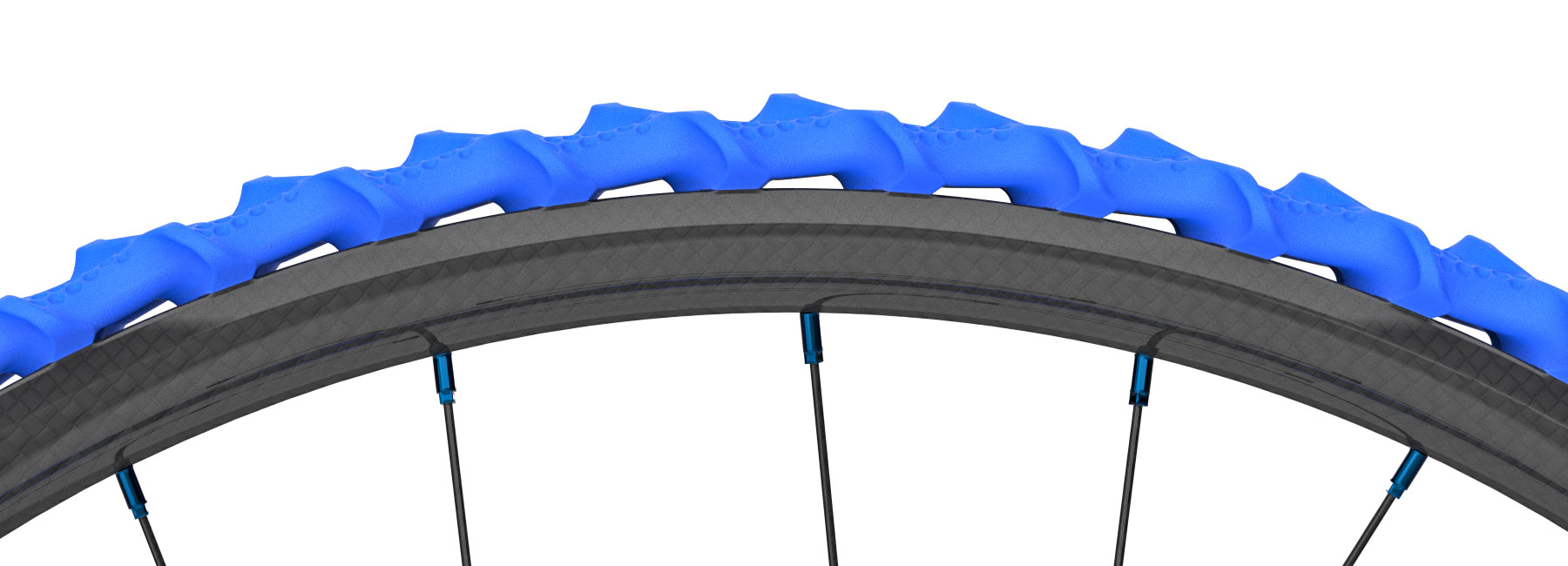
From the side, the blue Tubolight Diamana doesn’t look anything like other liners. Its undulating shape rises and falls in waves around the wheel, leaving gaps of space above the rim. From an angle, you can see the unique scooped nature of the Diamana liner, with dimpled ‘star’ shapes stacked on top of each other.
Tubolight claims that when an impact hits the tire from the outside, these scoops direct airflow into the rim bed under the liner via those lateral channel openings. Their shape takes advantage of the Venturi effect to speed up and compress the air as it moves under the liner. The dimples also claim the same boundary separation principle we see on golf balls and Zipp wheels, so more air goes into the lateral channel openings, and does not reflect back into the main tire volume.
That means air flows into the rim well faster than it can escape, delaying the fast rebound effect that otherwise makes the tire bounce off an obstacle.
Tubolight’s claimed results?

The apparent result is the local air pressure in the tire does not increase nearly as much at the site of an impact, so there is a much slower local rebound or bounce.
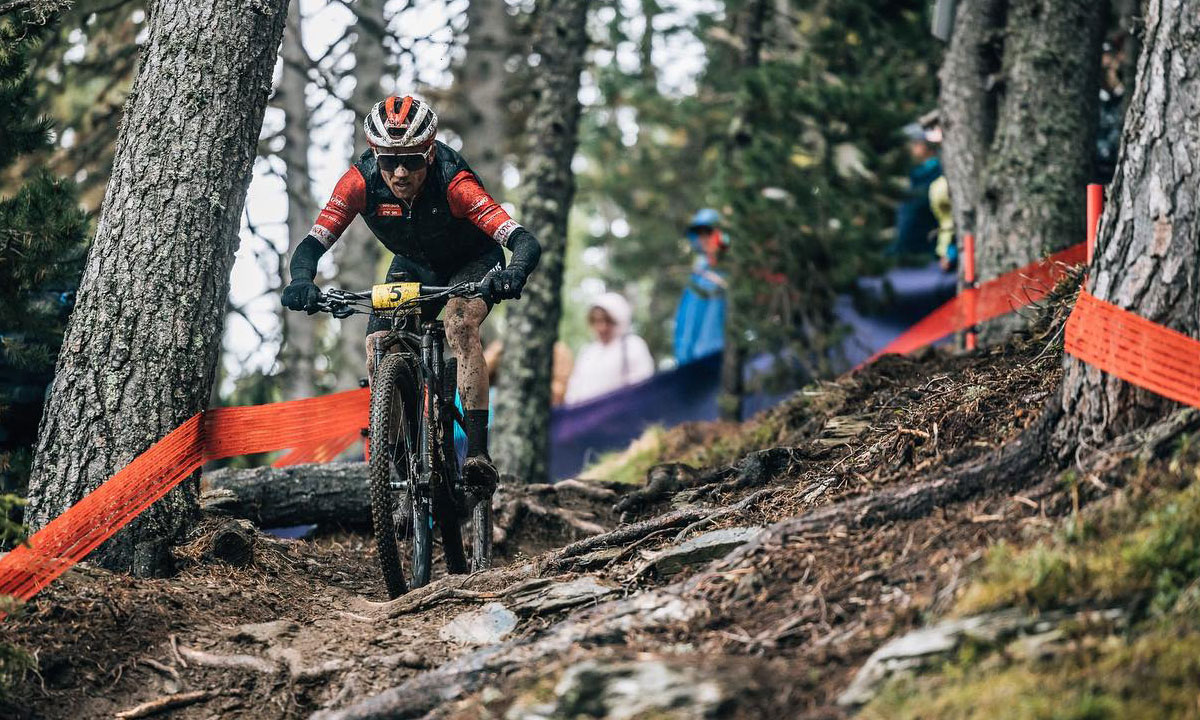
That means the deformed tire will continue to stay attached to the irregular ground surface for improved grip and control. Tubolight claims a “massive 60%” increase of consistent pressure against the ground for next-level traction. The slower rebound also claims 55% higher vibration damping, leading to decreased rider fatigue and a smoother ride.
They ultimately say 3rd-party testing confirms up to a 9% rolling-resistance reduction over rough surfaces.
Tech details
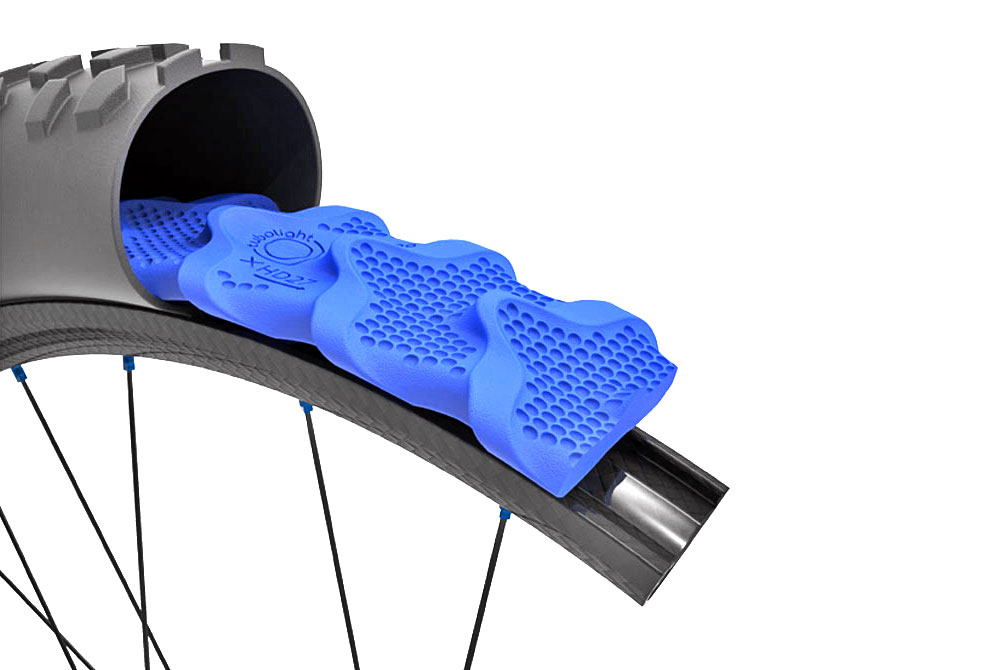
Tubolight Diamana liners are made of high-density closed-cell EVA foam – guaranteed 100% absorption-free to work with any sealant. Relative to other liners, extra foam hardness for the Diamana liners is necessary to ensure they retain their unique shape for optimized air movement inside the tire, and to deliver “years” of reliable performance. This “leads to the longest-lasting tire insert ever made” according to Tubolight, “even after long runflat rides“.
These unique Diamana liners are available in three different versions, with different thicknesses & densities to suit mountain bike riding from XC to DH. Their unique shape also ensures they can be used with any tubeless valves.
Tubolight Diamana tire liners – Pricing, options & availability
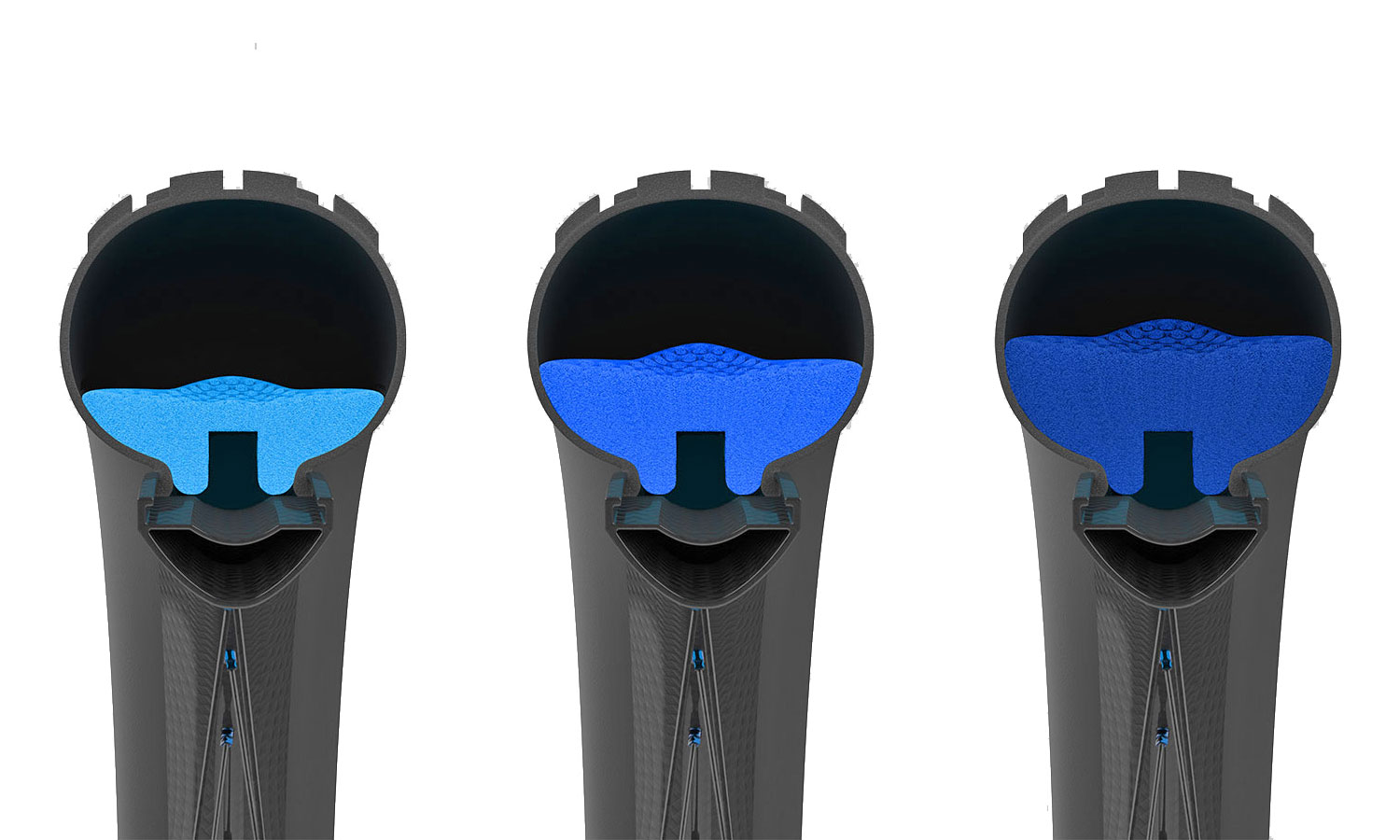
Diamana SL is the softest, thinnest & lightest for cross-country racing – at a claimed 97g per tire in 29″ only.
The thicker, medium-hardness Diamana HD is the most universal all-rounder tire liner at 145g in 29″ only, intended for rear downcountry, or front trail, enduro & DH tires.
Lastly, Diamana XHD features the thickest liner with the hardest EVA compound, specifically to be used with reinforced casing tires. XHD comes in both 27.5″ (205g) and 29″ (220g) sizes to suit hard-charging enduro & DH race bikes, as well as heavier eMTBs.
Tubolight Diamana tire liners are sold direct from Tubolight, available for 100€ exclusively in pairs. At the moment, only the 29″ SL+SL, SL+HD & HD+HD pairs are in stock. XHD liners are not currently available.
